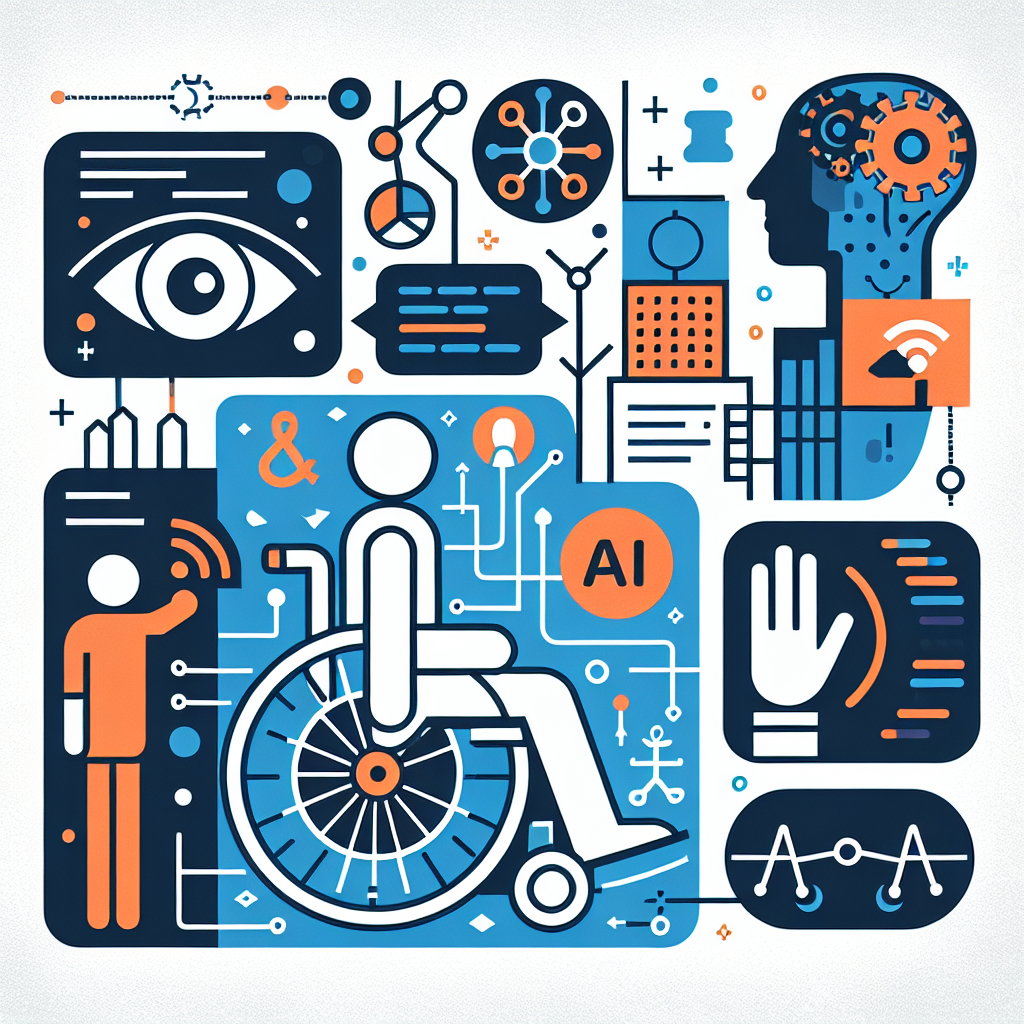In recent years, there has been a growing focus on improving accessibility and inclusivity for individuals with disabilities. With the advancement of technology, particularly artificial intelligence (AI), there are now innovative solutions that can help break down barriers and create a more inclusive environment for all.
AI-driven solutions have the potential to revolutionize the way we approach accessibility and inclusivity. These technologies can provide personalized support and assistance, enhance communication and interaction, and improve the overall quality of life for individuals with disabilities. In this article, we will explore how AI-driven solutions are being used to improve accessibility and inclusivity, as well as their potential impact on society as a whole.
One of the key areas where AI-driven solutions are making a significant impact is in the development of assistive technologies. These technologies are designed to help individuals with disabilities perform everyday tasks and activities more easily and independently. For example, AI-powered voice recognition software can assist individuals with mobility impairments in controlling their devices and accessing information. Similarly, AI-driven image recognition technology can help individuals with visual impairments navigate their surroundings and identify objects.
Another area where AI-driven solutions are being used to improve accessibility and inclusivity is in the field of communication. For individuals with speech or hearing impairments, communicating with others can be a challenge. However, AI-powered speech recognition and translation tools can help bridge the communication gap, allowing individuals to express themselves more effectively and engage with others in a meaningful way. Additionally, AI-driven chatbots and virtual assistants can provide real-time support and assistance to individuals with disabilities, helping them navigate social interactions and access information more easily.
In addition to assistive technologies and communication tools, AI-driven solutions are also being used to enhance the accessibility of physical spaces and environments. For example, AI-powered navigation systems can help individuals with mobility impairments find accessible routes and facilities in public spaces. Similarly, AI-driven design tools can assist architects and urban planners in creating more inclusive and accessible buildings and infrastructure.
Overall, AI-driven solutions have the potential to significantly improve accessibility and inclusivity for individuals with disabilities. By leveraging the power of AI, we can create a more inclusive society where everyone has equal access to information, services, and opportunities. However, it is important to ensure that these technologies are developed and implemented in a responsible and ethical manner, taking into account the diverse needs and preferences of individuals with disabilities.
FAQs:
Q: What are some examples of AI-driven assistive technologies?
A: Some examples of AI-driven assistive technologies include voice recognition software, image recognition technology, speech translation tools, chatbots, and virtual assistants.
Q: How can AI-driven solutions improve communication for individuals with disabilities?
A: AI-driven solutions can improve communication for individuals with disabilities by providing speech recognition and translation tools, as well as chatbots and virtual assistants that can assist with real-time communication and support.
Q: How can AI-driven solutions enhance the accessibility of physical spaces?
A: AI-driven navigation systems can help individuals with mobility impairments find accessible routes and facilities in public spaces, while AI-driven design tools can assist in creating more inclusive and accessible buildings and infrastructure.
Q: What are some ethical considerations when developing AI-driven solutions for individuals with disabilities?
A: It is important to ensure that AI-driven solutions are developed and implemented in a responsible and ethical manner, taking into account the diverse needs and preferences of individuals with disabilities. This includes ensuring data privacy and security, as well as providing transparency and accountability in the use of AI technologies.
In conclusion, AI-driven solutions have the potential to revolutionize accessibility and inclusivity for individuals with disabilities. By leveraging the power of AI, we can create a more inclusive society where everyone has equal access to information, services, and opportunities. It is crucial that we continue to develop and implement these technologies in a responsible and ethical manner, ensuring that they meet the diverse needs and preferences of individuals with disabilities. With the right approach, AI-driven solutions can truly make a difference in improving the quality of life for individuals with disabilities and creating a more inclusive and accessible world for all.

